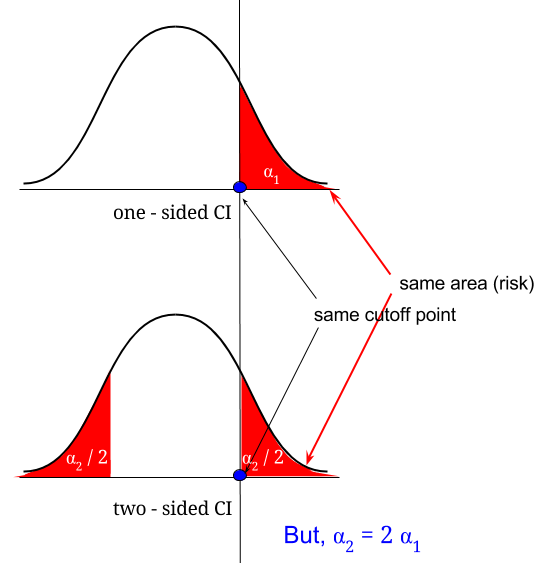I'm trying to understand (esp. the boldfaced part) how THIS ARTICLE (see p. 174, top-right corner) is suggesting that:
"to use the confidence intervals to test a statistical hypothesis and to maintain a Type I error rate at alpha:
- When testing a two-sided hypothesis at the alpha level, use a 100(1 - alpha)% confidence interval.
2. When testing a one-sided hypothesis at the alpha level, USE a 100(1 - alpha / 2)% confidence interval."


100(1 - 2 alpha)as Antoni writes in his answer. But you confusingly have (incorrectly)alpha/2in your question. $\endgroup$